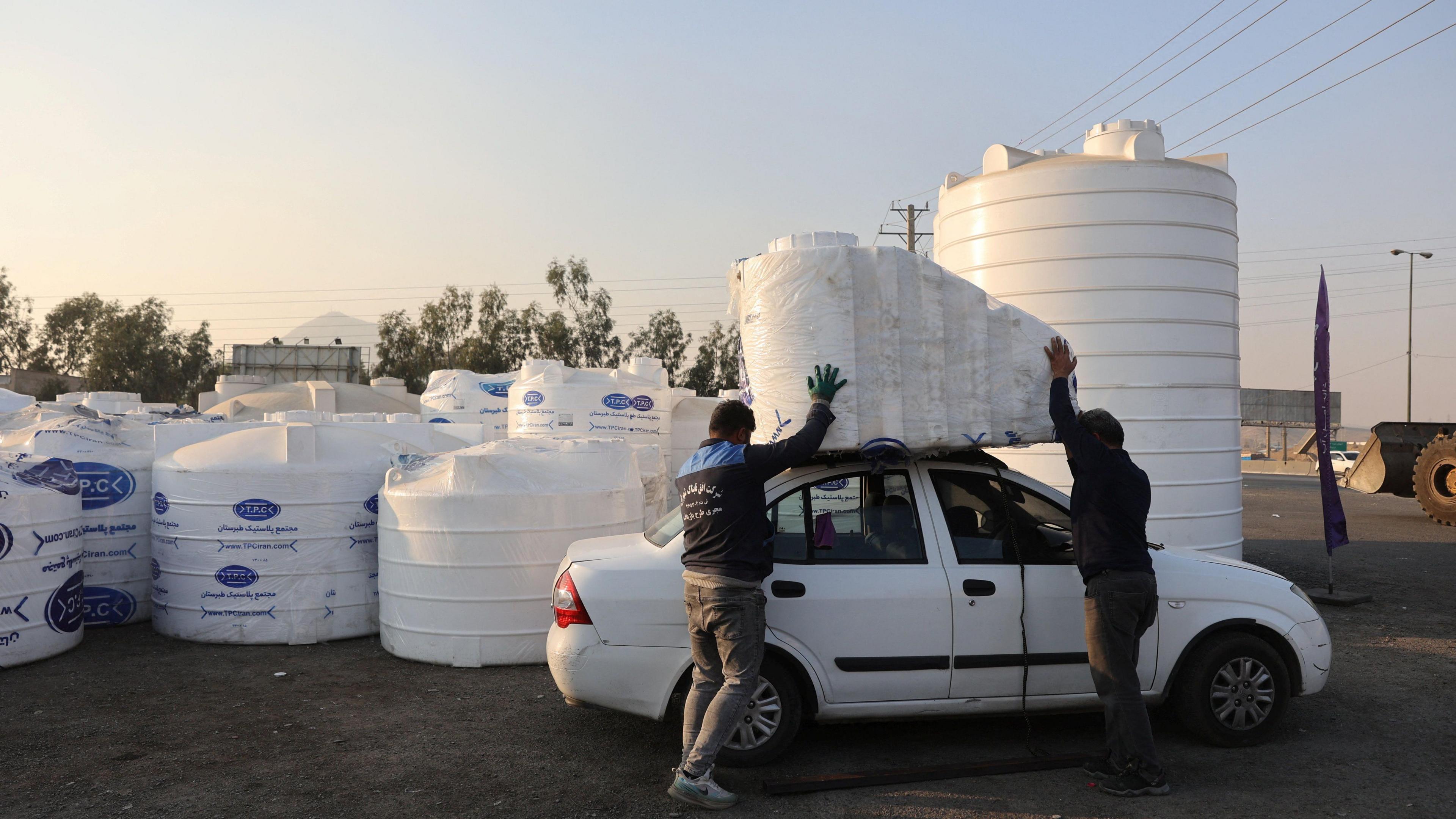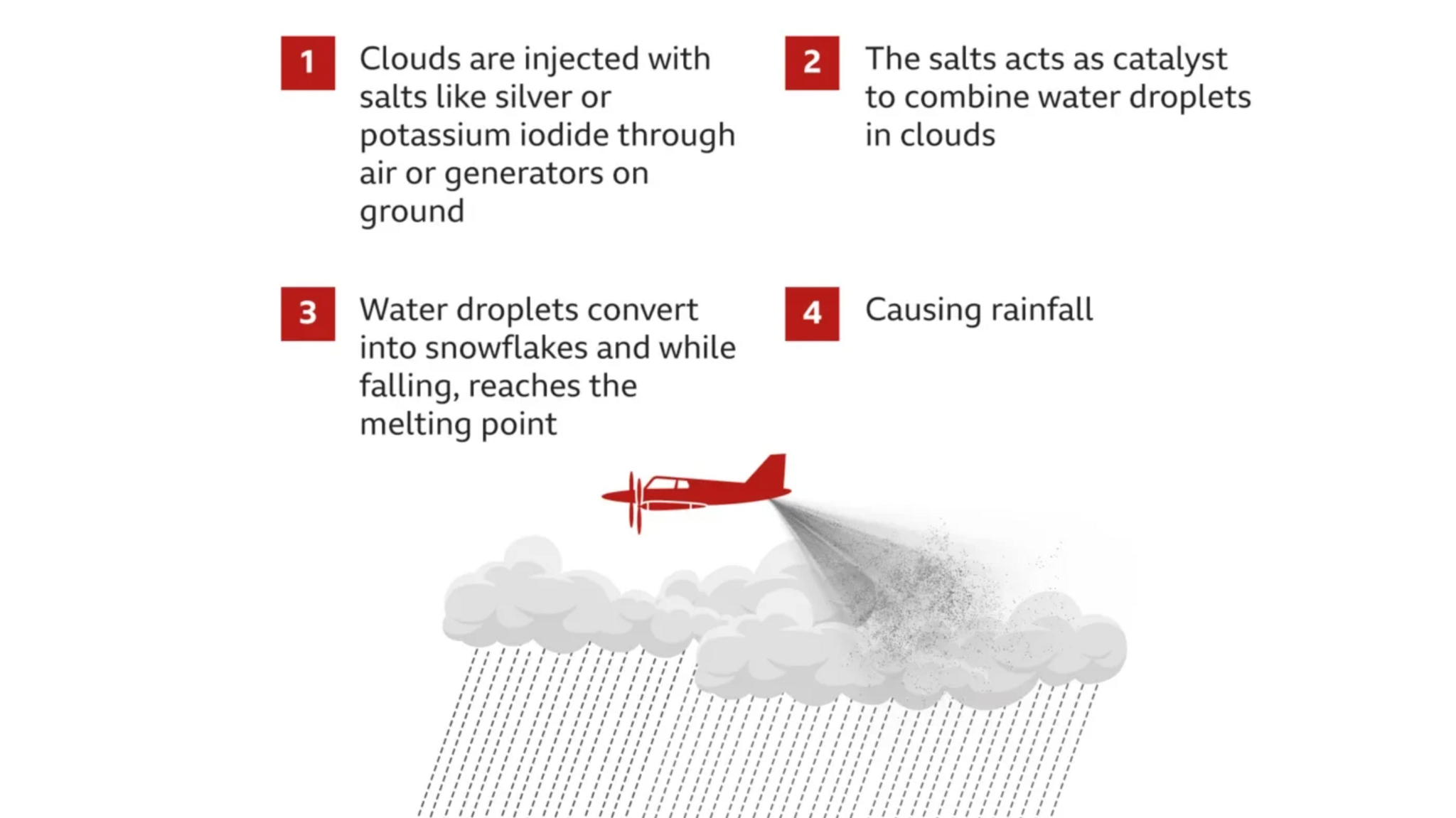What is cloud seeding and will it help Iran's drought?

A dry river bed in Iran
- Published
Iran has been facing its worst drought in decades, especially its capital, Tehran.
With rainfall at record lows, many reservoirs in the country are nearly empty.
Officials have been asking the public to conserve water, but are now taking further action by spraying clouds with chemicals to cause rain to fall - a process known as cloud seeding.
Keep reading to find out more about how this works and arguments about whether this is a good or bad way to deal with the crisis Iran is facing.
Climate change: What is it?
- Published20 January 2020
Earth has hottest year on record in 2024
- Published12 January
How serious is Iran's drought?

Hundreds of people have been gathering at mosques and shrines around the country to pray for rain
Iran is a country in the Middle East, bordering many countries including Afghanistan in the east and Iraq in the west.
Iran's meteorological organisation has said rainfall has decreased by about 89% this year compared with the long-term average, according to the Islamic Republic News Agency.
"We are currently experiencing the driest autumn the country has experienced in 50 years," it added.
Urmia is Iran's largest lake, but has largely dried out leaving a vast salt bed.

People have also been buying water storage tanks to try and save any water they can
Officials have said that water levels in Tehran's Amirkabir dam are at 8% of capacity, and have announced measures to make sure households and businesses aren't using more water than is strictly necessary.
President Masoud Pezeshkian recently warned that if there is not enough rainfall soon, Tehran's water supply could be rationed and people may be evacuated from the capital.
But his comments led to criticism in Iranian newspapers and on social media, with people saying the president is trying to scare people and that this idea isn't true.
What is cloud seeding?

Cloud seeding involves manipulating existing clouds to help produce more rain.
This can be done by using aircraft to drop small particles (like silver or potassium iodide) into clouds, or through generators on the ground.
Water vapour in the clouds can then condense more easily and turn into rain.
Cloud seeding is generally brought into play when conditions of wind, moisture and dust are insufficient to lead to rain.
The technique has been around for decades, and has been used in places like the US, China and the United Arab Emirates, to help tackle water shortages.
It was also seen in Lahore, Pakistan earlier this year when the government wanted to produce artificial rain in an effort to lower levels of air pollution.
In the past, it has also been used by ski resorts to produce more snow.
Is cloud seeding a good solution?

This was the Amirkabir dam in Tehran earlier this month after the drought began
Experts say that if done successfully cloud seeding can generally lead to 5-15% increase in rainfall.
But it can't create clouds out of nowhere, so if you've got blue skies then cloud seeding isn't going to work.
The BBC's global environment correspondent, Navin Singh Kadka, has also explained some of the other reasons that people aren't in favour of cloud seeding:
"Silver can be toxic and people have lodged complaints that it can lead to skin irritation. There are fears of what that contamination does to agriculture or aquatic animals."

Taps in some parts of the country are said to be running dry for hours at a time
He said another worry is "if we start introducing these kind of things, then government and societies won't address the cause of the problem", for example pollution or climate change.
He added: "If this is promoted as a silver bullet then people tend to drift away from the real solutions."
Another problem is that it can lead to conflict between countries, with some countries accusing others of "stealing their clouds".

This now dry reservoir supplies part of Tehran's drinking water
Navin also warns that "there are risks when you are tampering with nature, so you might see some achievement right now but it might have other impacts".
He explained: "When you touch something somewhere that might have an effect somewhere else. It's a murky picture, but there are unexplained threats, risks that we'll have to live with."
Despite this, he says he thinks there will be increasing use of cloud seeding by countries.
